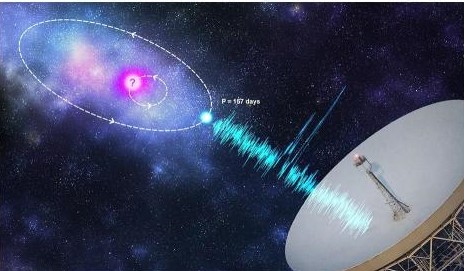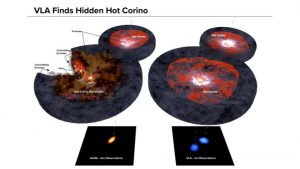Media
Transcript
As was felt last Monday, this week continues with a dichotomy of emotions that are hard to sort. On one hand, NASA has put out its call for media credentialing for the Mars Perseverance Launch, which is normally the sign that all is good, and it’s time to be excited about robots in space. At the same time, protesters across the United States are continuing to call for an end to racial injustice and are being met with violence that is sending people to hospitals for standing in the wrong place at the wrong time. Like many, I find myself unable to celebrate anything, not even a new robot going to Mars, while I see so many reminding us of what they have through as minorities in America.
As a woman in astronomy, I have experienced extreme harassment and continual social bias. I have spoken at length about this, and I would encourage you to find our Astronomy Cast episode on Sexual Harassment in Astronomy. Nevertheless, as a white woman, I find myself in the company of a support system of other women. We make up roughly 10-15% of the profession, and while that’s too few women, and while I have been the only woman in far too many circumstances, I still see people who look like me at all large events.
For people of color, the situation is far worse, with there being far less than even one hundred PhDs granted to African Americans in astronomy in the history of this nation. I can’t pretend to understand what they experience and want to instead take this moment to quote from ParticlesForJustice.org: We recognize that our academic institutions and research collaborations — despite big talk about diversity, equity, and inclusion — have ultimately failed Black people. Demands for justice have been met with gradualism and tokenism, as well as diversity and inclusion initiatives that — while sometimes well-intentioned — have had little meaningful impact on the lived experiences of Black students, staff, researchers, and faculty. Black representation among physics faculty is non-existent at most institutions, and it is widely known that Black students often feel unwelcome, unsupported, and even unsafe in their physics departments and predominantly white campuses.
Continuing from their letter to the profession …
We call for a universal strike to give them a break and because those of us with the most privilege have the greatest responsibility to use that privilege to enact change. We must confront the institutional barriers to justice for Black people in academia and beyond, challenge the notion of the meritocracy whereby “objective and neutral” criteria infused with systemic racism are used to exclude Black people from physics and other academic disciplines, and rebuild our institutions and collaborations in a way that is just and equitable.
Importantly, we are not calling for more diversity and inclusion talks and seminars. We are not asking people to sit through another training about implicit bias. We are calling for every member of the community to commit to taking actions that will change the material circumstances of how Black lives are lived — to work toward ending the white supremacy that not only snuffs out Black physicist dreams but destroys whole Black lives. In calling for a strike, we call on people who are not Black to spend a day undertaking discussion and action that furthers this work, while providing Black scientists with a day of rest. Every single institution around the world can and should get involved in this work, and the strike marks an opportunity to recommit to the humanist values which should underpin academic work, including the belief that Black Lives Matter.
We here at CosmoQuestX on Twitch will go dark on Wednesday in solidarity with #strike4blacklives. We are moving our popular Rocket Roundup show to tomorrow, Tuesday. Each of us in our own way will do what we can to carry the load that others might rest, and we would encourage all of you to do the same.
For today, however, we do have science.

Last week we ran a story on how Fast Radio Bursts (FRBs) had been, at least in the case of four of these super energetic events, localized to the outskirts of galaxies. Today, we get word from Jodrell Bank that across four years of observations they have discovered a really weird repeating pattern of behavior in FRB 121102. This pattern could only be discovered thanks to regular monitoring by the giant, 76-meter Lovell Telescope. Over these many years, they found this object will go quiet for roughly 67 days at a time, and then become active, with irregular bursts of radio emission scattered through a ninety-day window. The randomness of the outbursts in that window is something we’re not used to seeing in astronomy, but this kind of behavior is seen in another FRB, FRB 180916.JU10158+56. While the latter has a significantly longer designation, its outburst cycle is ten times shorter than that of 121102.
It’s still not clear what these objects are, but this kind of burst behavior is consistent with the outbursts being tied to some sort of an orbital pattern and a high-mass or extreme object. This work, however, seems to maybe rule out as a cause of magnetic precession. Since magnetic fields aren’t well understood, we want to leave that possibility on the table for now but push it out to the edge of our lists of possible theories.
In addition to spotting high-energy events like FRBs, radio telescopes also allow us to see processes in the sky that are blacked by gas and dust and hidden from our optical light telescopes. This is what has made them such amazing tools for studying baby stars and their surrounding disks that may someday form solar systems. Radio telescopes, however, are not all equally able to peer through the dust. The much-beloved ALMA, for instance, sees the sky in wavelengths of light that are measured in millimeters and fractions of millimeters. And this lets them see many planet-forming disks in amazing detail.

What has confused many, however, is ALMA’s inability to make out twin disks in the youngest of binary star systems. These very young warm disks are called “hot corinos”, and they are rich in complex organic molecules that can seed forming planets with the chemistry needed to someday form life. Since both stars in binary systems are expected to form at the same time, it’s expected they’ll form corinos and eventually planets at the same time. But with ALMA, only one star has ever been seen to have the corino. So scientists decided to go long, and use the Very Large Array (VLA) to look for light from corinos in centimeter wavelengths, and they found them.
According to Principal Investigator Claire Chandler from the National Radio Astronomy Observatory (NRAO), “We decided to look for evidence of these chemicals at longer wavelengths that can easily pass through dust. It struck us that dust might be what was preventing us from detecting the molecules in one of the twin protostars.” This difference in dust may be an alignment issue or due to interactions between the two systems. Interestingly, corinos haven’t been seen in single-star systems, yet. It will be interesting to see if this “go long” with a centimeter light approach allows more of these earliest stages in planetary disk formation to be seen.
There are certain things in astronomy that make everything hard: magnetic fields and dust, and today’s news really is just full of both. Our final story carries us from dusty forming worlds to dust between the stars.
We’ve long known from observations that complex atoms, including chlorofluorocarbons and polycyclic hydrocarbons, can be found in space. How they get there has been challenging to explain, but new work from the Max Planck Institute for Astronomy has sought to recreate in a lab what happens in space, and they are starting to succeed.

Dust grains have been thought to be an onion-like structure, with a core of complex chemistry entombed in an icy shell. Left alone, the molecules might slowly grow through collisions, but would otherwise stay constant in their composition and structure. The thing is, dust is never really left alone when it’s in space. Dust molecules are regularly bombarded with cosmic rays, random atoms, and the ionizing ultraviolet light of our Sun. All these factors allow chemistry to take place – if the interactions make it through the icy shell – and allow for new and ever more complex atoms to slowly develop.
It turns out our thinking on the structure of dust may be wrong. Experimental work by Alexey Potapov and his research team has determined the ices are thin enough that they may pose no real barrier. To quote from the press release, during the experiment: a laser is pointed at a graphite specimen, eroding (ablating) minute particles from the surface, mere nanometers across (where one nanometer is one-billionth of a meter). … Instead of grains completely covered with several layers solid ice (water ice, or carbon monoxide ice) like an onion, the dust grains they produced in the laboratory, staying as closely as possible to realistic deep-space conditions, were extended, many-tendrilled shapes – fluffy networks of dust and ice.
This shape gave them a hundred times the surface area we’d see in simpler structure, and allow more room for chemistry. This is a revelation and reminds us that the universe is far more creative in how it does things than our models often account for.
Learn More
Jodrell Bank leads international effort which reveals 157 day cycle in unusual cosmic radio bursts
- The University of Manchester press release
- “Possible periodic activity in the repeating FRB 121102,” Kaustubh Rajwade et al., 2020 May 19, Monthly Notices of the Royal Astronomical Society (Preprint on arxiv.org)
Astronomers Find Elusive Target Hiding Behind Dust
- National Radio Astronomy Observatory press release
- “Hot Corinos Chemical Diversity: Myth or Reality?” Marta De Simone et al., 2020 June 8, Astrophysical Journal Letters
New experiments show complex astrochemistry on thin ice covering dust grains
- Max Planck Institute for Astronomy press release
- “Ice Coverage of Dust Grains in Cold Astrophysical Environments,” Alexey Potapov, Cornelia Jäger & Thomas Henning, 2020 June 5, Physical Review Letters (Preprint on arxiv.org)
Credits
Written by Pamela Gay
Hosted by Pamela Gay
Audio and Video Editing by Ally Pelphrey
Content Editing by Beth Johnson
Intro and Outro music by Kevin MacLeod, https://incompetech.com/music/


 We record most shows live, on Twitch. Follow us today to get alerts when we go live.
We record most shows live, on Twitch. Follow us today to get alerts when we go live.